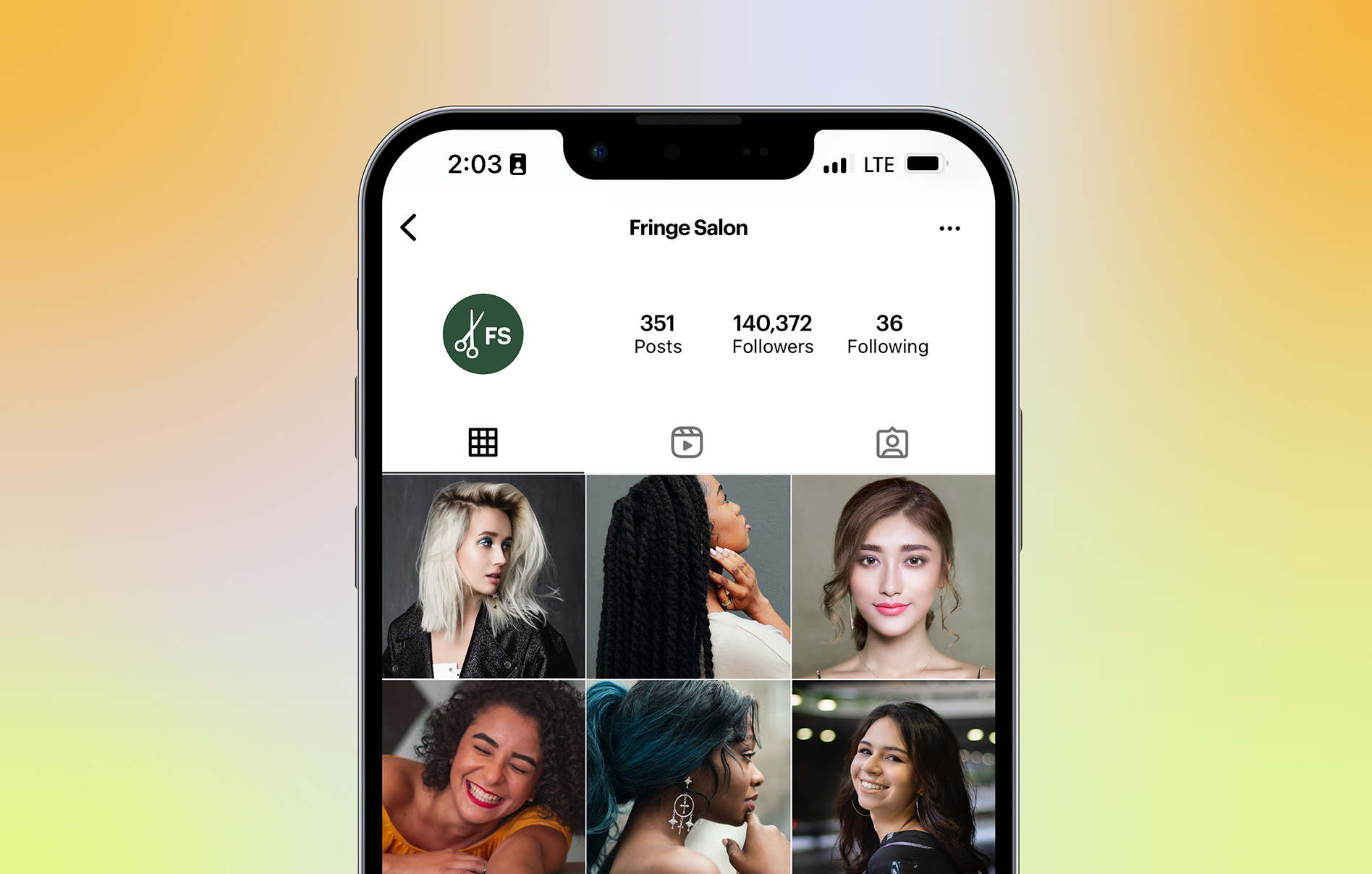Chances are, if you want to open a salon, you know that you need a salon business plan.
But it can definitely feel intimidating, so where do you start?
That’s where we come in. We created this in-depth guide to help you get started writing a simple hair salon business plan, including an outline of what to include, tips and resources.
First things first, though, let’s dive in to what a salon business plan actually is and why it’s important.
In this article:
- What is a salon business plan?
- Where to start
- What to include in your business plan
- Additional resources
What Is a Hair Salon Business Plan?
To break it down, a business plan is a document that outlines how an individual or group of individuals will start a business.
A salon business plan outlines how someone would start a salon, including how the problem the salon is solving, marketing research, financial plans, and more.
And unless you have enough capital to open a salon on your own, you’ll need one of these to secure a loan.
How to Start Writing Your Salon Business Plan
If you’re thinking “Well, that sounds like a lot of work,” you would be correct.
But! We’re here to help.
We included a checklist of all the things you’ll need in your salon business plan, including just where to start — because sometimes, that can be the hardest part.
Research And Budget For The Tools You Need
There’s definitely going to be quite a bit of research that goes into this plan, and as our resident beauty industry expert Nina Tulio says, pricing (or in this case, asking for a loan) is the most accurate when it’s based on facts and numbers.
Think about what tools you’ll need to run your salon successfully, and build that into the loan.
Here are some things to consider:
1. Space: Will you be renting, or purchasing a space to work out of?
2. Furniture: What do you need to get the salon all set up to start taking clients?
3. Employees: How many employees will you need, and how much will you pay them?
4. Booking Platform: How are you going to reach new clients? From reaching new clients to connecting with an existing one, Schedulicity is your one-stop-shop for all your booking, communication, and payment needs.
Actually Getting Started – The Writing Portion
Charts and graphs will be your BFFs during this process.
It’s much easier to show your profits and losses in a chart, rather than describing each and every one — there are tons of examples online (check out our resource list below!).
Also, don’t be afraid to ask for help with proofreading, either from a friend or family member with a Type A reputation or even a professional.
This is an important piece to starting your business, so if you aren’t sure if you have all the answers, somebody else does!
What to Include in Your Salon Business Plan: A Checklist
Now that you’ve done some research, you can start writing your salon business plan! There are quite a few pieces of information to include, so we’ve made a comprehensive list to help keep you organized!
Cover Page
First things first, you’ll need a cover page. This doesn’t have to be anything fancy, but it does make the finished product look a little more profesh!
Your cover page should include your salon business name, address, owner’s name, phone numbers, email address, and all other contact information.
Executive Summary
Next, you’ll include an executive summary. This will basically be a brief overview of the rest of the business plan.
This is where you highlight the key points that will be included in the rest of your business plan to prepare readers for what’s coming.
This should be clear and concise, yet capture the reader’s attention.
Opportunity
Problem
What need or problem will your salon be solving? Is there a need for haircuts or manicures in your area? Is there a need for affordable salon services in your area?
Solution
How are you going to be solving this problem? What makes your salon different and what are you dedicated to?
Target Market
This is the group of people in which you are going to aim your services towards. They can be categorized by age, gender, income, and other aspects that make them unique, such as working or not working, has children or doesn’t, and more.
Competition & Advantages
What are the current alternatives to your business in your area? Are there other salons, and if so, what will set you apart? What do you have or what will you offer your clients that will be better than your competitors?
Keys to Success
What aspects of your business will lead to its success? This can include things like location, environment, convenience, reputation, and more.
Execution
Marketing Plan
How are you going to reach your target audience?
Are you going to utilize organic social media, advertisements, direct marketing, word of mouth and referrals, or a combination?
Make sure you’ve done your research on what works and why!
Sales
How do you anticipate your sales will look in a year?
If so, this could be because of your marketing and growing reputation, and more.
If your sales increase during year one, will you add another employee during year two?
This of your goals a year, two, three down the road, how your sales will look, and how you’ll change your behavior moving forward.
Operations
This section refers to location and facilities, including the address of your salon and square footage.
What is special or important about the location? Is it part of a strip mall or in a busy part of town?
Milestones & Metrics
A table is a super clear and easy way to show your milestones.
Milestones include things like acquiring financing, hiring employees, beginning your marketing plan, and your grand opening.
Remember to include dates for each milestone!
As for key metrics, what are you going to measure to determine the success of your salon?
This could include average revenue per month, new business leads per month, new clients from word of mouth, and social media engagement and follower growth.
Company
Overview
Include your company description and history. Is this part of a franchise, or a totally new business?
What makes your salon unique and special? Just a short summary will do, since you’ve described this elsewhere!
Mission Statement
A good mission statement answers the ‘why’ behind your business. Why does your business exist, and what beliefs do you hold true?
Don’t be afraid to ask your employees or team members how your mission statement sounds (and make sure it’s actually something you can stand behind).
Management Team
Identify the people that are a part of the management team and why they are qualified.
Personnel Table
Create a table that includes your employees, their titles, and how much business you think they’ll attract (in dollars) each year for the next three years.
Financial Plan
This section will include a lot of charts and graphs. If you want examples of each one, check out this salon business plan example.
Key Assumptions
Your financial projections will be based on some key assumptions. Include those here! Those assumptions can include things like:
- Pay structure – how will the owners be paid? Will your employees be paid based on commission, and if so, what percentage?
- Do you think you’ll have full-time employees, or will you utilize a booth rental structure?
- What does your projected revenue look like? Will it start off increasing off the bat, or do you foresee a dip in your revenue when you first open?
- What are your projected costs? This can be categorical; it doesn’t have to be numerical.
- What are your projected sales? Again, this can be categorical; do they come from mainly services, or also products?
- Do you think you’ll run into any issues with reporting or sales? Include those here.
Revenue By Month
Use a chart to show your revenue by month over the next year. Take into account busy seasons, time it takes to get off the ground, and more!
Expenses By Month
Use a chart to show your expenses by month. This includes both direct and indirect costs.
Direct costs are the costs directly involved with the service, including labor and materials.
On the other hand, indirect costs are those not directly related to the service, including reception supplies, utilities, and technology.
Net Profit/Loss By Year
Use a chart to show your net profit or loss by year for the next three years.
Financing – Use & Source of Funds
The use of funds includes initial expenses, tangible assets, and a cushion of cash to keep you up and running and in case of emergencies.
How much do you think the initial equipment will cost? What about supplies and initial losses incurred before launch?
Be sure to include a cushion that will help you feel comfortable moving forward!
The source of funds includes where you’ll be getting the funds from. This will most likely be a combination of owner savings and loans from a bank or investor.
Projected Profit & Loss Statement
Of course, this won’t be absolutely exact, but you’re just estimating here.
Create a chart that includes direct costs, operating expenses (salaries and wages, marketing expenses, rent, etc), and operating income over the next three years.
Projected Balance Sheet
This will be another chart that includes current assets, long-term assets, current and long-term liabilities, and total equity over the next three years.
Projected Cash Flow Statement
This will be the last chart you’ll need, we promise! This will include net cash flow, investing and financing, and cash at the end of the period over three years.
Key Takeaways
Writing a business plan can definitely feel like a lot, we know!
But it is important to remember to be thorough, do your research, and include all the information in order to secure a loan.
There are tons of resources and examples out there, and use this guide as an outline to help you get started.
Additional Resources for Writing a Salon Business Plan
Articles
- 11 Sample Business Plans to Help You Write Your Own (Hubspot)
- [Template] Hair and Beauty Salon Business Plan (BPlans)
- Write Your Business Plan from U.S. Small Business Association
- A Financial Planning Guide for Hair Salons (Timely)
- 7 Best Banks for Small Businesses in 2021 (Fundera)
- The Best Online Tax Resources for 2022
- 25+ Salon Marketing Ideas to Increase Your Revenue
- How to Hire Your First Assistant
Tools
- For writing your business plan (and all future writing): Grammarly. Use this to make sure your salon business plan reads perfectly.
- For your financial charts and maps: Google Sheets. Perfect for the financial section of your site, you can use Google to generate charts and graphs without paying for more expensive software.
- For appointment scheduling: Schedulicity. Ideal for online booking, marketing, and payment processing, we also offer reporting tools to track and project your monthly revenue. (Plus, start for free!)
- For bookkeeping: Our favorite beauty industry-specific accountant recommends QuickBooks Simple Start. Here are some of her other financial resources.
- For payment processing: Schedulicity. Our rates are the lowest in the industry and built into the same account you’ll use for everything else. Here’s a comparison chart of payment processors.
- For automated text reminders: Schedulicity again! We offer automated text and email reminders for clients.
- For newsletters (if that’s your thing): Mailchimp. If you’re planning on sending out regular newsletters, Mailchimp has some great tools for free (or really, really cheap.) Schedulicity also has built-in email marketing to send messages to your clients.
Webinars & Video
- Financial Freedom: Our ongoing webinar series is dedicated to finances for small businesses. Rewatch them at your leisure on YouTube. They’re also available as a podcast!







